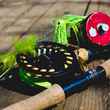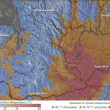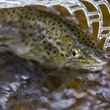Hatch Magazine has seen some changes over the last few months, with several more to come as we close out 2013. Some of the changes that have already happened have been small, such as changes in layout. Other changes have been more significant, such as the addition of advertising to the site. Ads began popping up a few months ago, and it is worth noting that the decision to add advertising to hatchmag.com was one not taken lightly, as the site was initially envisioned as an ad-free destination. That said, we abandoned the idea of keeping ads off the site in favor of growing the site and bringing readers more of what we strive to do well: showcasing fly fishing photography, covering conservation news specifically as it relates to anglers, producing pieces about travel and fly fishing destinations, bringing you news and reviews on new gear and providing fly fishing tips and insight when we can. As part of making the decision to introduce advertising "work" in our minds, we've decided to reserve a portion of the advertising available on the site for non-profit organizations that are doing work to conserve and protect waters and lands that are important to anglers. This advertising will, of course, be offered free of charge to these organizations.
Currently, we're reserving 5% of our total inventory of advertising (total ad impressions) for this purpose. If you represent an organization that fits the description above would like to advertise your organization, project or other aspect of what you do on Hatch Magazine, please contact us and let us know. We'll limit the number of advertisers in this regard each month, in order to be able to give each group a reasonable level of visibility, as opposed to spreading things too thin.





























